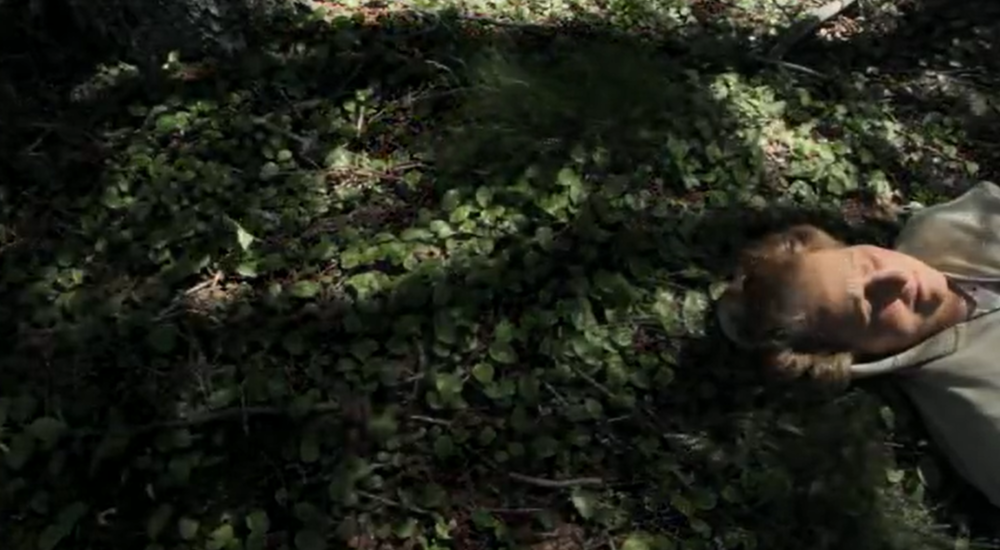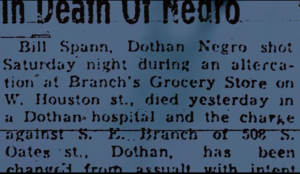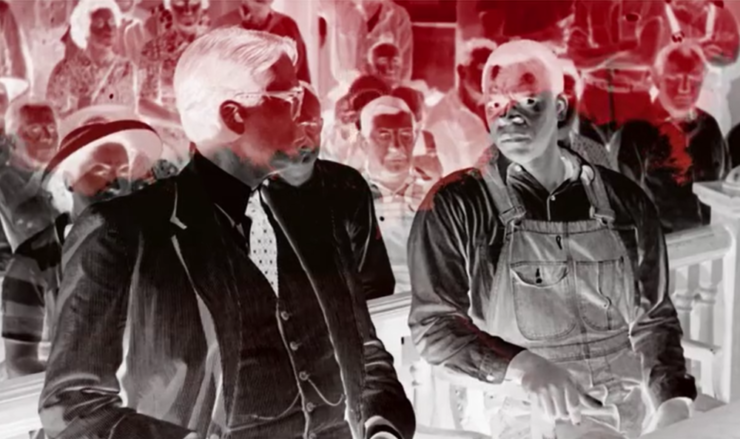Almost all of us have home movies of our families somewhere, from the flickering black and white of 8-millimeter film to the Instagramable perfection of an iPhone video. We like to think of them as a kind of homespun cinema verité, capturing our lives as we lived it.
But filmmaker Travis Wilkerson thinks home movies are something more than that.
“They are actually propaganda films for families,” he says. “They’re full of wonderful people you’d like to have dinner with.”
The movies represent our public face, says Wilkerson, whose “intimate Southern gothic” film “Did You Wonder Fired the Gun?” aired over the weekend at the Camden International Film Festival, which showcases documentary filmmaking and “the next generation of nonfiction storytellers.”
“I was trying to undermine this public face and try to rediscover a private face that’s more honest.”
“I was trying to interrogate that,” he said at a panel discussion called “What Do Cameras Do?” at the annual festival in midcoast Maine. “I was trying to undermine this public face and try to rediscover a private face that’s more honest.”
That goes to the heart of two films at CIFF that were both “home movies” of a sort. In Wilkerson’s film, he acts as a detective trying to get to the truth of a shameful moment in his Alabama family’s past: In the 1940s, his great-grandfather shot and killed a black man – and got away with it. It’s a movie that resonates deeply today, as the country grapples with racism and Confederate memorials.
The other “home movie” is much gentler, but also tries to get beyond the public face of a family. For “In the Waves,” filmmaker Jacquelyn Mills shot 150 hours of film, documenting her grandmother’s grief over the loss of her sister, and her coming to terms with her own mortality, and the life she’s lived.

“It’s really personal,” Mills said at the panel discussion. “The thing I was surprised about with the camera that it actually allowed this opening with her. …. We were able to take a really special journey together.”
Mills’ lyrical film captures small, intimate moments with her grandmother Joan and her grandfather William in their Cape Breton lives: the two of them having dinner together, with the silences (companionable and less so) that mark a long marriage; her grandmother vacuuming the house in her underwear; her grandfather performing a keening folk song, his back to the camera, in his bedroom.
“I always felt like the camera was an extension of me,” she said of the process. “It was very intuitive, moment-by-moment, how not to disturb the flow of what you were experiencing.”
But as moderator Jason Fox, the editor of the film journal World Records, said: “The camera doesn’t record truth; it produces something different. Every time a camera comes into the situation, it changes things.”

Wilkerson used a large camera, which amplified his “otherness” on his return to the South. He remains separate, but also damns himself for the racism that has run through his family, from his murdering (and apparently sexual abusing) great-grandfather to his aunt, a white supremacist who attends Confederate reenactments.
He begins the movie with a voice-over that says, “This is not another White Savior story. It’s a white nightmare story."
He draws a line between his great-grandfather and Atticus Finch, the hero of “To Kill a Mockingbird.” Using footage of the film washed in red (he later carries the symbolism further by using negative-image footage of the film), he then shows the difference between the fictional, saintly character and his deeply flawed, real-life relative.
“My white relative from Alabama wasn’t standing on the steps of that jail, bravely stopping the lynching of a black man,” he says in narration. “No, my great-grandfather would have been one of the members of that racist lynch mob, reeking of booze, carrying a rope and a pistol, wearing a fedora and a terrifying smile.”
In one effective scene, he uses actual home movies to play off the idea of a family’s public face. The frames show a family gathering in October 1946, a playful moment of mugging for the camera. Then he reveals that it’s the same month his great-grandfather killed Bill Spann.
“Was it taken before, or after?” he asks. “One of them has his name inscribed on a death certificate; one of them is making home movies.”
In the film, Wilkerson is using his family as a stand-in for white society as a whole. Although Mills’ movie is very different, she’s also reaching for some universal truths. Fear. Acceptance. Regret.
One moment that stays with me comes about 18 minutes in, when her grandmother talks about falling in love with her husband. She says that she knew that her sister liked William, and that William liked her. But she says she “controlled” things, and made sure she got him. She muses that if she had two lives, she’d let it happen naturally “and see where everybody would end up.”
Mills asks her, “You got what you wanted, right?” She answers: “Yeah. But did Poppy? Did he get what he really wanted?”

The titles of these two “home movies” reflect the different sensibilities and, yes, agendas of the filmmakers. Wilkerson chose a line from a Phil Ochs civil rights folk song, “William Moore,” about a white activist who was shot to death on a road in the South, his killer never brought to justice.
“Did you wonder who had fired the gun?” Ochs sings. “Did you know it was you who fired the gun?” -- meaning we are all implicated in racism.
Mills title is more poetic, and its meaning seems to be captured in a moment in which we hear her grandmother reading a story aloud: “She didn’t look back. She looked at the mountains, and the waves that carried her toward them.”
The rhythm of that is lovely, and it too has broader symbolism, about facing the last days of our lives.
Two “home movies”: One made with love, one with shame, if not outright hate. Both peeling back the public face to reveal the private one.



